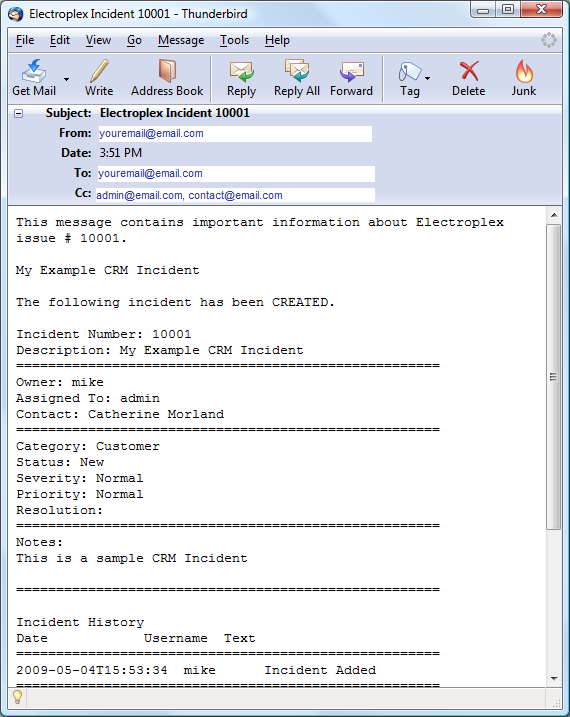An xTuple CRM Incident can be used to track the different initiatives you have in your organization. For example, you can track Customer inquiries, product-related quality issues, Vendor-related quality issues, or the status of a marketing campaign. When an Incident is created or modified, it can be emailed to interested parties. This is done through the Batch Manager. In this section, we will show how this process flow is configured and put into action.
Caution
Some of the information provided in this section is technical in nature. If you have trouble following the steps described here, please contact your system administrator for assistance.
In Section 2, “Emailing Purchase Orders”, Section 3, “Emailing Sales Order Acknowledgements”, and Section 4, “Emailing Invoices”, we saw how email information was entered at the Vendor master or Customer master levels—and how certain tokens (e.g., </docnumber>) could be used to dynamically insert order number information into email messages. For this scenario, we will be creating a global email configuration for use by CRM Incidents. In xTuple ERP, global email settings are defined as EDI Profiles.
Note
You can learn more about configuring EDI Profiles in Chapter 2, System Administration.
The email token we used in previous examples was the </docnumber> token. As you recall, using this token in a Vendor setup caused the Purchase Order Number to be included in any emails sent to the Vendor. Well, for CRM Incidents, a whole range of other tokens are supported. Here's the list of tokens available for CRM Incident emails:
- </email1>
Incident owner email address
- </email2>
Incident assignee email address
- </email3>
Incident contact email address
- </description>
Incident description
- </docnumber>
Incident number
- </doctype>
"INCDT"
- </docid>
Incident primary key id
- </docbody>
Notes and history of Incident record
- </comments>
Incident comments
To begin setting up an EDI Profile for CRM Incidents, follow these steps:
Follow this path:
Select the NEW button
In the "Name" field, enter "CRM-Customer"
In the "Type" field, select "Email"
In the "To" field, enter "</email>"
In the "Cc" field, enter "</email2></email3>"
In the "Subject" field, enter "Electroplex [or your company's name] Incident </docnumber>"
In the "Message Body", enter the following:
"This message contains important information about Electroplex [or your company name] issue # </docnumber>.
</description>
</docbody>
</comments>"
Leave "Send Email as HTML" unchecked
Your screen will look similar to the following:
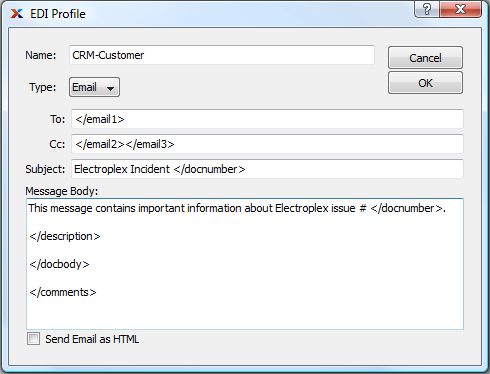
Once you are satisfied with the set up, select the OK button to save the EDI Profile.
Now that we have our CRM EDI Profile defined, the next step is to configure the CRM Module to send emails for CRM Incidents. To begin, follow these steps:
Follow this path:
In the "Incident Email Delivery Profile" field, select the "CRM-Customer" profile
Under the "Email Delivery when Incident" section, select all options
Select the "Preview Email before sending" option
The screen will look like the following:
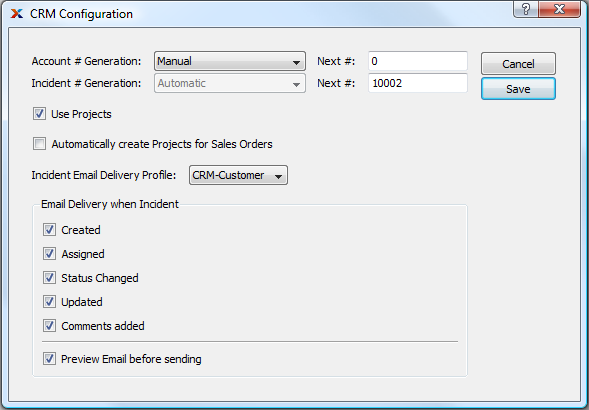
Finally, select the SAVE button. Then, to ensure these configuration changes have taken effect, log out of xTuple ERP, then log back in again.
This next step is optional. However, we've included it because it enables you to establish a link between an Incident Category and a unique EDI Profile specifically designed for that category. If you choose not to set this relationship, then xTuple ERP will use the EDI Profile defined in the CRM Configuration for all Incidents—regardless of which Incident Category they belong to. To begin, follow these steps:
Follow this path:
Select the NEW button
In the "Incident Category" field, enter "Customer"
In the "Order" field ,enter "30"
In the "Email Delivery Profile" list, select the "CRM-Customer" profile
In the "Description" field, enter "Customer Incident"
The screen will look like the following:
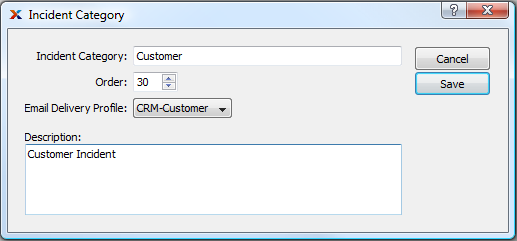
To save this information, select the SAVE button
At this point, the configuration steps are all done. Now we can create a simple CRM incident—and follow it through to email delivery. The Incident screen contains a multitude of fields. But for this exercise, we are only going to fill in the minimum necessary—so we can save our example and submit it to the Batch Manager. To begin, follow these steps:
Follow this path:
Set the "Category" field to "Customer"
Enter some text in the "Description" field
Select a CRM Account in the "CRM Account" field
Caution
Be careful, as you are about to send an email to a Contact related to the CRM Account. For testing purposes, you may want to enter your email address instead of the selected Contact's email address.
In the "Owner" field, enter your user
In the "Assigned To" field, enter another user
Select a Contact using the browse button
Enter some notes in the "Notes" field
Set the "Status" to "New"
Set the "Severity" to "Normal"
Set the "Priority" to "Normal"
Leave "Resolution" blank
The results will look like the following screen:
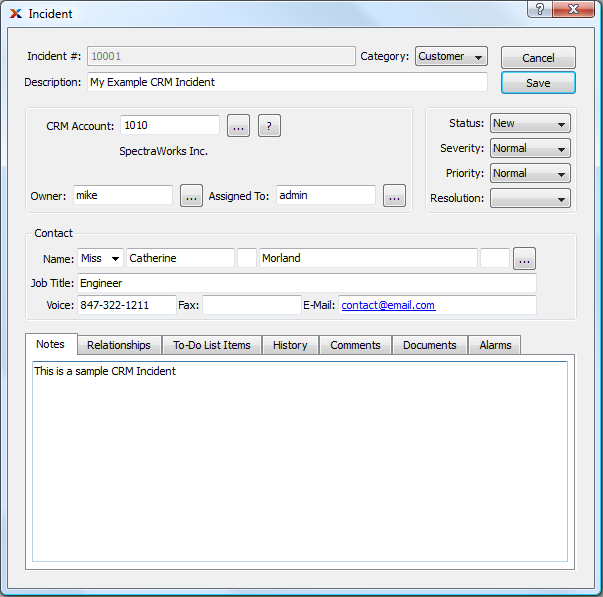
After you select the SAVE button, you will be presented with the email delivery screen, as shown in the following screenshot:
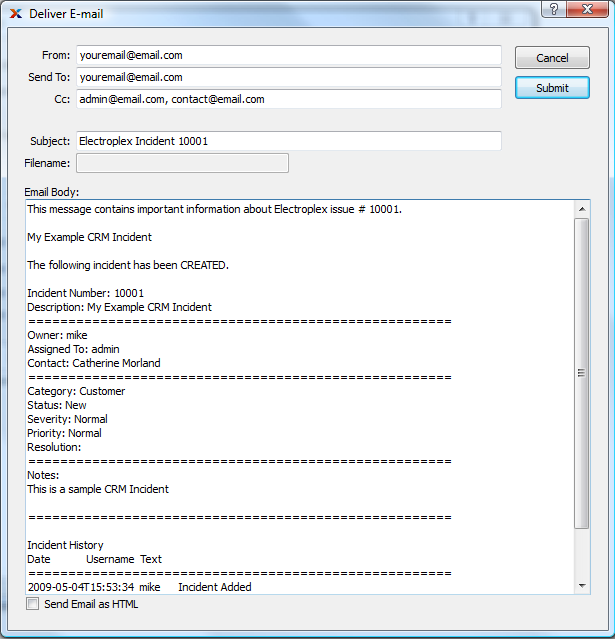
As we saw when we emailed other business documents, the tokens we included have been replaced with their actual values. To send the job to the Batch Manager, select the SUBMIT button.
